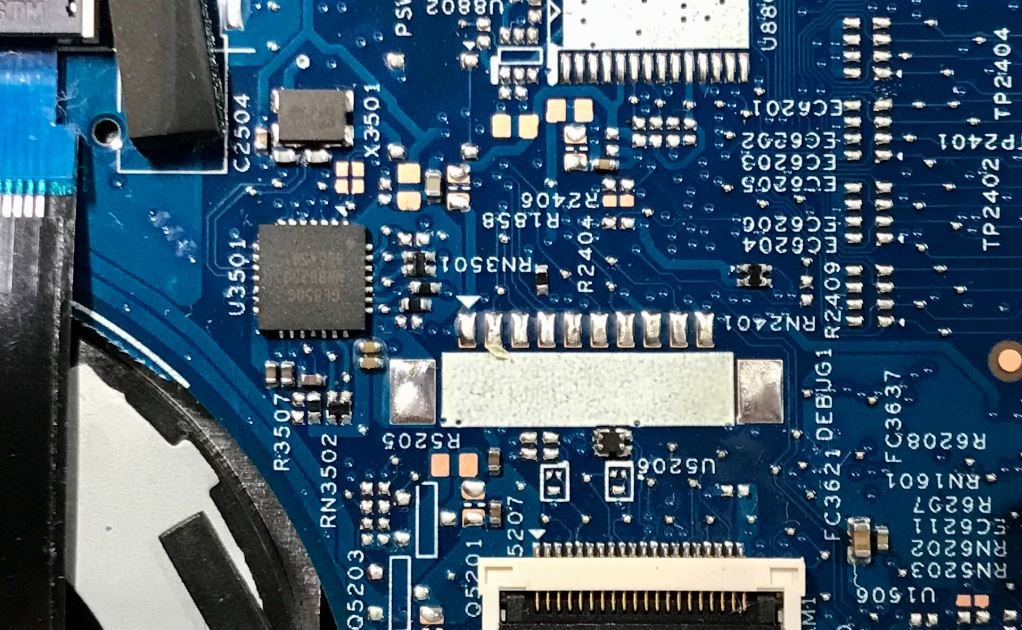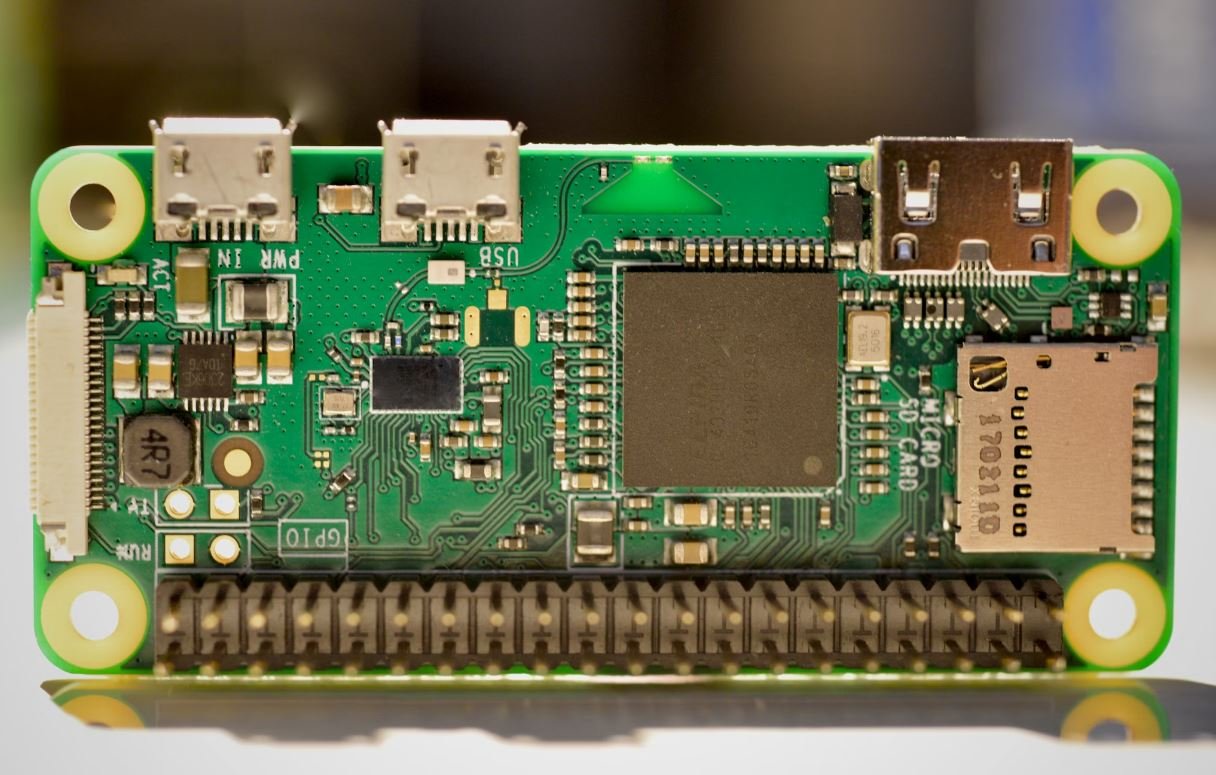Applications of Synchronous Motor
Synchronous motors are widely used in various industrial and commercial applications due to their unique capabilities and benefits. As a type of AC motor, they operate at a constant speed that is directly proportional to the frequency of the power supply. This article explores the key applications of synchronous motors and their significance in various industries.
Key Takeaways:
- Synchronous motors are commonly used in power systems, industrial machinery, and transportation applications.
- These motors provide high efficiency, precise speed control, and stable operation.
- Their ability to maintain constant speed makes them ideal for synchronous generators and power factor correction.
- In transportation, synchronous motors are used in electric vehicles (EVs) and hybrid vehicles.
Power Systems
Synchronous motors play a vital role in power systems, specifically in electrical grids and power plants. One of their primary applications is as synchronous generators, which convert mechanical energy into electrical energy. *These motors are often paired with turbines or other prime movers to generate electricity at a constant frequency.*
Synchronous generators ensure stability in power systems and help maintain a balanced and reliable power supply. They are widely used in power plants, including hydroelectric, thermal, and nuclear power plants.
| Application | Details |
|---|---|
| Hydroelectric Power Plants | Commonly used for large-scale electricity generation from water flow. |
| Wind Farms | Used for converting wind energy into electricity. |
| Gas Turbines | Pairing synchronous motors with gas turbines provides efficient power generation. |
Industrial Applications
In various industrial settings, synchronous motors find applications in different types of machinery where precise speed control is crucial for operations. *These motors are widely used in textile, metalworking, and printing industries, where synchronized movements are required.*
Synchronous motors are also used in heavy machinery, including cranes, compressors, and lathes. Their ability to provide constant speed control and maintain synchronization with other machine components ensures smooth and efficient operation.
- Synchronous motors are commonly found in textile machines such as looms and spinning machines.
- In the metalworking industry, they are utilized in lathes, milling machines, and grinders.
- Printing presses rely on synchronous motors for precise control of paper feed and color registration.
Transportation Applications
Synchronous motors have gained significant traction in the transportation sector, particularly in electric vehicles (EVs) and hybrid vehicles. *These motors provide high torque at low speeds, making them ideal for powering EVs and helping reduce carbon emissions.*
In EVs, synchronous motors are used in both the traction system and the charging system. They offer efficient energy conversion and regenerative braking capabilities, improving the overall efficiency and range of electric vehicles.
| Parameter | Electric Vehicles (EVs) | Traditional Vehicles |
|---|---|---|
| Efficiency | High efficiency due to fewer mechanical components. | Lower efficiency due to energy loss in internal combustion engines. |
| Emissions | Zero tailpipe emissions. | Emit greenhouse gases and pollutants. |
| Torque | High torque at low speeds, providing instant acceleration. | Lower torque at low speeds, requiring gear shifting for acceleration. |
Conclusion
Synchronous motors find extensive applications in power systems, industrial machinery, and transportation. Their ability to maintain constant speed, high efficiency, and precise control make them indispensable in various industries. With ongoing advancements in technology, the potential applications of synchronous motors are expected to expand further, driving innovation and efficiency across sectors.

Common Misconceptions
Misconception 1: Synchronous motors are only used for large-scale industrial applications
One misconception about synchronous motors is that they are only suitable for large-scale industrial settings. While synchronous motors are indeed used in many industrial applications, they are also utilized in smaller-scale systems. For example, synchronous motors can be found in household appliances like microwave ovens and air conditioning units.
- Synchronous motors can be used in household appliances.
- They are suitable for smaller-scale systems.
- Their applications are not limited to industrial settings.
Misconception 2: Synchronous motors are less efficient than other types of motors
Contrary to popular belief, synchronous motors are not inherently less efficient than other types of motors. While there may be specific instances where one type of motor is more efficient than another, it is not accurate to generalize that synchronous motors are less efficient overall. In fact, synchronous motors can achieve high levels of efficiency when properly designed and operated.
- Synchronous motors can achieve high efficiency levels.
- The efficiency of a motor depends on its design and operation.
- It is inaccurate to assume synchronous motors are less efficient.
Misconception 3: Synchronous motors are difficult to control and require complex control systems
Some people mistakenly believe that synchronous motors are difficult to control and require complex control systems. While it is true that synchronous motors require some form of control to maintain their synchronous operation, advancements in technology have made control systems more user-friendly and accessible. Additionally, there are various control strategies available, ranging from simple voltage control to more sophisticated control techniques.
- Control systems for synchronous motors have become more user-friendly.
- A range of control strategies is available for synchronous motors.
- Complex control systems are not always necessary for synchronous motors.
Misconception 4: Synchronous motors are unreliable and prone to failure
Another misconception is that synchronous motors are unreliable and prone to failure. While all types of motors can experience failure under certain conditions, synchronous motors are generally known for their reliability. With proper maintenance and regular inspections, synchronous motors can operate effectively for long periods without significant issues.
- Synchronous motors are known for their reliability.
- Regular maintenance and inspections can ensure their proper operation.
- Misconception: synchronous motors are unreliable.
Misconception 5: Synchronous motors are not cost-effective compared to other options
It is a common misconception that synchronous motors are not cost-effective when compared to other motor options. While synchronous motors may have a higher upfront cost, they can offer advantages in terms of efficiency, power factor correction, and overall performance. The long-term benefits and savings may outweigh the initial investment, making synchronous motors a cost-effective choice in many applications.
- Synchronous motors can provide efficiency and power factor correction advantages.
- They may offer long-term cost savings despite higher upfront costs.
- Misconception: synchronous motors are not cost-effective compared to other options.

Advantages of Synchronous Motors
A synchronous motor is an alternating current (AC) motor in which the rotation of the shaft is synchronized with the frequency of the supply current. Due to their unique characteristics, synchronous motors find various applications in industries that require precise control and high efficiency. The following tables highlight some key advantages of using synchronous motors:
Efficiency Comparison: Synchronous Motors vs Induction Motors
Comparing the efficiency of synchronous motors with induction motors can provide insights into their performance. The table below presents a comparison of the efficiency between these two motor types:
| Motor Type | Efficiency (%) |
|————|—————-|
| Synchronous | 95 |
| Induction | 90 |
Power Factor Improvement
Synchronous motors offer a significant advantage of power factor correction, which can greatly benefit the overall power system. The following table shows the power factor values and the corresponding advantages achieved by using synchronous motors:
| Power Factor | Advantage |
|————–|————————–|
| < 0.95 | Decreased efficiency |
| 0.95 - 0.99 | Improved efficiency |
| > 0.99 | Maximum system efficiency |
Applications by Load Type
Synchronous motors provide excellent performance across different load types. The table below describes the applications of synchronous motors based on the type of load they handle:
| Load Type | Application |
|—————————|————————————–|
| Constant Load | Conveyors, pumps, and fans |
| Variable Load | Air compressors and machine tools |
| Unbalanced or Shock Load | Presses, crushers, and grinders |
Speed Control Range of Synchronous Motors
Synchronous motors offer a wide range of controllable speeds, which makes them suitable for various applications. The table below illustrates the speed control range of synchronous motors:
| Control Range | Applications |
|—————|———————————-|
| 0 – 100% | Textile machines, printing presses |
| 0 – 50% | Paper mills, hoists |
| 0 – 30% | Rolling mills, cement kilns |
Excitation Methods of Synchronous Motors
The excitation method used in synchronous motors affects their performance. Consider the table below, which outlines different excitation methods and their applications:
| Excitation Method | Applications |
|——————|———————————-|
| DC Excitation | Generators and large motors |
| Permanent Magnet | Small motors and fans |
| Self Excitation | Small generators and alternators |
Frequency and Voltage Ratings of Synchronous Motors
Knowing the acceptable frequency and voltage ratings of synchronous motors is crucial for proper operation. This information is showcased in the following table:
| Frequency (Hz) | Voltage (V) |
|—————-|————-|
| 50 | 220 |
| 60 | 440 |
| 50 | 380 |
Starting Methods of Synchronous Motors
The starting method employed in synchronous motors impacts their initial operation. The table below demonstrates different starting methods and their applications:
| Starting Method | Applications |
|———————–|————————————–|
| Induction Motor Start | Fans, blowers, and basic machinery |
| Damper Winding Start | Large synchronous motors and generators |
| Static Frequency | High-power synchronous motors |
Applications in Power Plants
Synchronous motors play a vital role in power plants, and their applications vary based on specific needs. The following table lists common applications of synchronous motors in power plants:
| Application | Description |
|————————|————————————————————————–|
| Boiler Feed Pumps | Providing high-pressure water to boilers for steam generation |
| Forced Draft Fans | Supplying air to the combustion chamber of the boiler |
| Cooling Tower Fans | Facilitating the cooling process of the condenser |
| Generator Excitation | Providing the direct current (DC) field required for generator operation |
Applications in Oil & Gas Industries
Synchronous motors find extensive usage in the oil and gas industry due to their reliable performance. The table below highlights some applications within this sector:
| Application | Description |
|—————————-|————————————————————————|
| Compressors | Supplying compressed air for various processes and equipment |
| Pumps (Fluid Transfer) | Transmitting fluids through pipelines or transportation systems |
| Drill String Power Tongs | Facilitating the assembly and disassembly of drill strings |
| Gas Injection Systems | Injecting gas into oil wells for enhanced recovery and pressure control |
In conclusion, synchronous motors offer several advantages such as high efficiency, improved power factor, and wide speed control range. With diverse application areas ranging from power plants to the oil and gas industry, synchronous motors continue to play a crucial role in achieving precise control and reliable operation.





